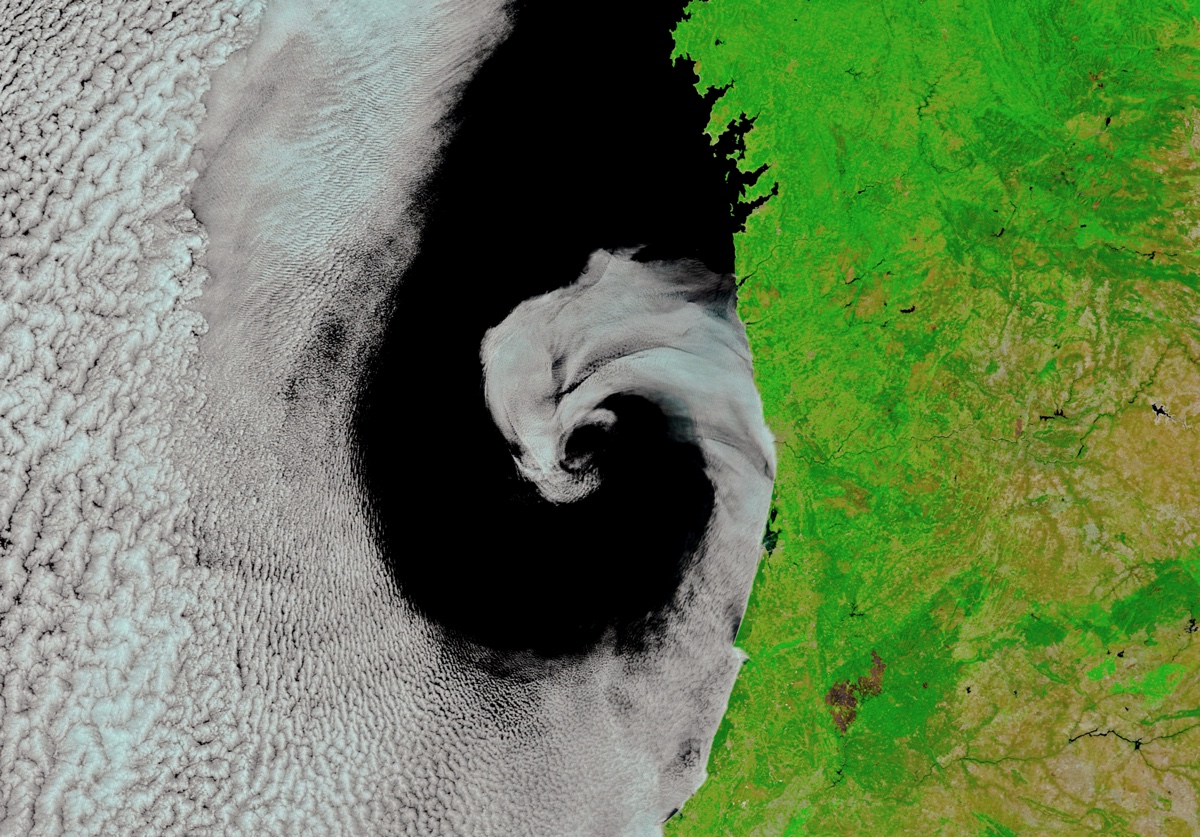Cyclone 'Licks' Portugal Coast in Gorgeous Space Image

A curling tongue of clouds reaches out to taste the Iberian Peninsula in a new satellite image.
The striking shot comes courtesy the Moderate Resolution Imaging Spectroradiometer (MODIS) on NASA's Terra satellite and NASA's Earth Observatory, which released the image Tuesday (July 25). It shows a cyclone, or low-pressure system, off the coast of Portugal. The system produced little to no rain, but pulled dry air from over the land into an atmospheric dance with moist ocean air, forming a spiral, Peter Knippertz, a meteorologist at the Karlsruhe Institute of Technology in Germany, told the Earth Observatory.
Knippertz told the Earth Observatory that this weather pattern on July 16 occurred during a heat wave, when Portugal and Spain were experiencing temperatures above 100 degrees Fahrenheit (40 degrees Celsius). The heat contributed to the temperature difference between the continent and the ocean.
The conjunction of land and water often gives rise to strange and beautiful cloud formations. In 2015, the MODIS instrument on NASA's Aqua satellite (Terra's sister satellite) captured sweeping cirrus clouds off the coast of Chile, sculpted by swift winds in the upper atmosphere. Gravity wave clouds often form off coastlines, as in this 2016 shot off of West Africa; in this instance, dry, cool nighttime air from the desert buoyed moist ocean air upward into the atmosphere, where it condensed, dropped under the influence of gravity, hit the rising dry air and rose again, creating the wave-like pattern.
Off Alaska, ocean winds sometimes sculpt clouds into parallel "streets." And marine upwelling that brings frigid water from deep in the Pacific Ocean up to the surface causes frequent bumpy fog off the coast of Peru when water vapor in the air condenses on contact with the cold ocean surface.
Original article on Live Science.
Sign up for the Live Science daily newsletter now
Get the world’s most fascinating discoveries delivered straight to your inbox.

Stephanie Pappas is a contributing writer for Live Science, covering topics ranging from geoscience to archaeology to the human brain and behavior. She was previously a senior writer for Live Science but is now a freelancer based in Denver, Colorado, and regularly contributes to Scientific American and The Monitor, the monthly magazine of the American Psychological Association. Stephanie received a bachelor's degree in psychology from the University of South Carolina and a graduate certificate in science communication from the University of California, Santa Cruz.









